With the publication of this book list the project “Nuremberg. Casus pacis” begins an important final cycle of materials addressed to everyone who wants to know more about the reasons and consequences of the existence of the Third Reich. On the basis of these sources, we have been describing the realities of the Second World War and the Nazi crimes, which were considered and condemned by the Nuremberg Tribunal. Each of these books is worth reading and reflection. We warn you, this is difficult to read - it is only for those who are truly prepared to know the whole truth about Nazism.
Today, we call your attention to a list of books containing the testimonies and evidence used by the International Military Tribunal in Nuremberg to convict the leaders of Nazi Germany and, subsequently, many of the direct executors of their orders. Over the years, many things have been forgotten, and Nazism has regained its fans and followers again, many of whom have learned to manipulate facts and evidence, simply accusing witnesses of lying. However, none of the facts revealed by the Nuremberg trial have been lost or archived. The books of that time along with modern research will prevent the people of the twenty-first century from being misled - unless they voluntarily begin to deceive themselves.
Mass extermination: research
- Konstantin Pahalyuk, Leonid Terushkin. Sobibor. Eyes on both sides of barbed wire

This collection opened a series of books on death camps, compiled and published jointly with the Russian Military-Historical Society and the Scientific-Educational Centre "Holocaust". Sobibor is one of the key points of the "Operation Reinhard", the State program of the Third Reich for the systematic organized extermination of Jews and Gypsies in the General Government of occupied Poland.
The collection "Sobibor" introduced a number of new sources - documents, memoirs, research materials, so far unknown. In addition to the precise presentation of facts, the publication of transcripts of the interrogation of Nazi criminals and other documents, the authors reveal two major themes in the book on the Nazi Camp of Mass Extermination.
The Nazi death camps are often described as factories for the extermination of people, and the prisoners presented as an obedient suppressed mass. The book about Sobibor discovers the history of the revolt raised by the prisoners under the leadership of the Soviet lieutenant Alexander Pechersky, which resulted in escape and death of most of the rebels. As former Polish President Lech Wałęsa said, “Saving lives was not the goal of the heroic uprising, the struggle was for a dignified death. Defending the dignity of 250,000 victims, most of whom were Polish citizens, the Jews won the moral victory. They preserved their dignity and honor, they have defended the dignity of the human race".
The book, unlike others books about Sobibor, pays due attention to Pechersky’s close associates.
The second theme seems even more important. Among the guards in Sobibor were also former Soviet men, traitors who had served in the Red Army. The article by the Israeli scholar Ārons Šneiers describes in detail the "generic" phenomenon of wachmanns, supplemented by the transcripts of the interrogations of these collaborators and the indictments from previously unavailable cases. It’s a different perspective on Sobibor, from the other side of barbed wire, with the eyes of the executioners.
Quote:
“Notice how indifferent the captured collaborators were about the crimes they had committed. Their cold words hide the tragedy of thousands of people. ... Thousands of people have become accomplices to bloody crimes, and it takes effort to understand how this could happen”.
- Laurence Rees. Auschwitz: The Nazis and 'The Final Solution'
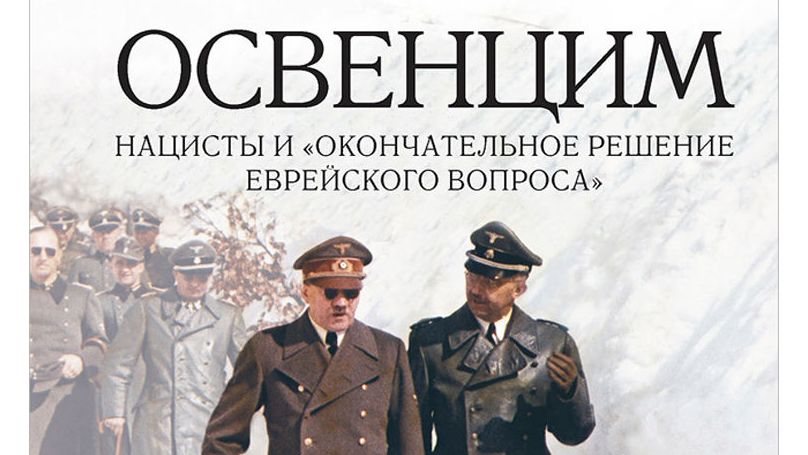
The English historian Laurence Rees is known both as a journalist and as one of the directors of the BBC’s historical programs. However, unwilling to engage in research and creativity as part of the company’s program policy, he began producing and directing his own documentaries and television series, accompanying each publication of the book with material and details not included in the screen version. He headed the BBC’s history department for many years being its creative director, and understood that no television project could convey the depth and importance of historical research, especially regarding such topics as Nazism.
Rees was a brilliantly educated strict academic scholar and responsible journalist who was accustomed to proving every single fact - this makes his books even more convincing, though he was born in 1957 and did not witness the war. According to the “Historians” British magazine "Rees has created a series of works that were meticulously structured and well-grounded, supplemented by vivid archival material from a wide variety of sources. ... Rees is one of the few, and perhaps the only one, who has met and interviewed not only hundreds of people affected by the horrors of World War II, but also, most importantly, spoke to many war criminals. All this allowed Rees to create a comparative, multifaceted picture of the horrors of war, and he has no equal in that".
The book "Auschwitz: The Nazis and 'The Final Solution’" was created during the work on the six-serial film of the same name. It’s a dreadful documentary, a collection of routine practices and details depicting unprecedented cruelty and Auschwitz as a murderous system.
The author wonders how the Germans - one of the most enlightened nations in Europe - were able to sink so low, he uses one of the most terrifying death camps as an example to show how Nazism was turning into the most monstrous and inhumane doctrine.
Quote:
“This notion that the Nazis proceeded incrementally against the Jews goes against the understandable desire to point to a single moment when one crucial decision was made for the ‘Final Solution’ and the gas chambers of Auschwitz. But this history is not so easily resolved. The decisions that led to the sophistication of a killing technique that delivered families to their deaths by a railway link which stopped only metres from the crematoria, took years to evolve. The Nazi regime was one that practised what one historian famously called ‘cumulative radicalisation’,’ whereby each decision often led to a crisis that led to a still more radical decision. The most obvious example of how events could spiral into catastrophe was the food crisis in the L6dz ghetto in the summer of 1941 - a situation that led one Nazi functionary to ask whether the most ‘humane solution might not be to finish off those of the Jews who are not fit for work by means of some quick- working device’.* Thus the idea of extermination is offered up out of ‘humanity’".
- Stanislav Aristov. Daily life of Nazi concentration camps.
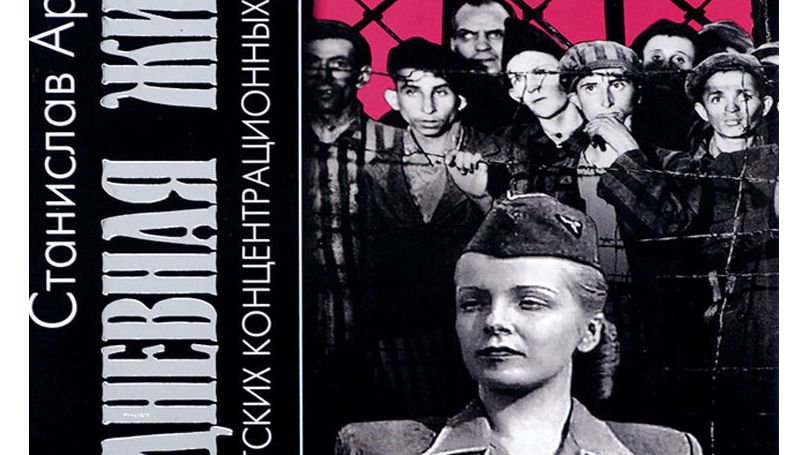
The modern researcher Stanislav Aristov, in his book, set himself the task to study the mechanism of Nazi concentration camps setting emotions aside, from the point of view of management, organization and economics. He made an attempt to find out how camps were administered, who was responsible for what, what was the system of recruiting undercover agents among prisoners, how works were organized etc. How could those camps turn into a profitable and beneficial business? The author answers many questions.
He has managed to conduct a detailed examination of such an inhuman product as Nazism. Nevertheless, the book has a strong emotional impact on readers precisely because of the presentation of plain facts. Even the author himself sometimes steps away from this academic tone. When he cites the words of the surviving prisoners, their emotions cannot be concealed or taken out of the quote, and the author did not seek to do so.
The resulting encyclopedia of the life of Nazi concentration camps is a worthy source of information on the subject, if you want to get good understanding of their functioning.
Quote:
"The prisoners were awakened by sirens. At 4:00 a.m. in spring and summer and at 5:00 a.m. in winter. As soon as the siren was heard, "capos" started to wake prisoners up with screams and beatings. Over the next half-hour, the prisoners were to have time to make their bunks, go to the toilet, wash up and get "breakfast". The people beaten by the capos interfered with other people. There were conflicts, disputes, fights. Prisoners who were still quite strong prevented the weakest one from having breakfast. That half-hour passed as one moment, a moment filled with a struggle for survival. And then the unit heads together with their assistants kicked the prisoners out of the barracks to line them for the first inspection on that day, for the so-called “appel””.
- The Black Book of Soviet Jewry. Edited by Ilya Ehrenburg and Vasily Grossman
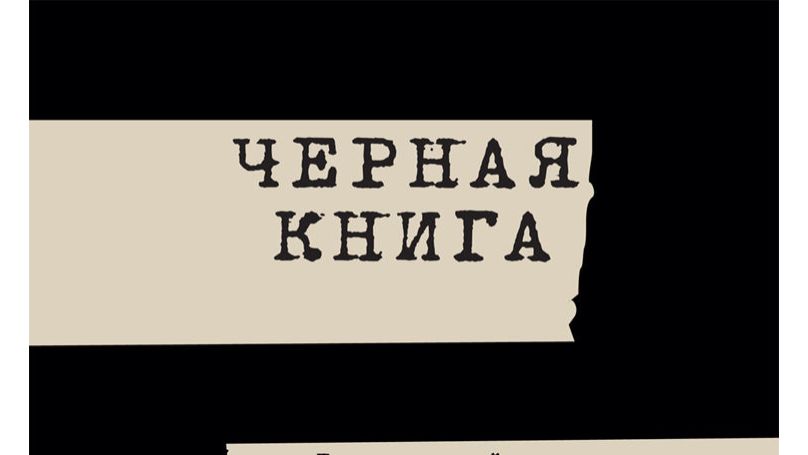
This book is one of the key sources in Holocaust historiography, a unique archive of documents and eyewitness testimonies about Nazi crimes in the occupied territories of the USSR. One can say that the "Black Book" is a basic material, which must be read in order to gain insight into this difficult subject.
The compilation was initiated by Albert Einstein and the American Committee of Jewish Writers, Scientists and Artists. Einstein requested the creation of a collection of materials on the Nazis' crimes againts the Jewish population of the USSR in the Soviet Jewish Anti-Fascist Committee (JAC).
Among the authors are Margarita Aliger, Pavel Antokolsky, Valeria Gerasimova, Vasily Grossman, Vera Inber, Veniamin Kaverin, Andrey Platonov, Lidiya Seifullina, Ruvim Frayerman , Viktor Shklovsky[ and others. The book includes letters, diaries, stories and testimonies of witnesses; special attention was given to the letters written before the execution. The basis was sketches of Soviet writers, written after their visits to Nazi crime scenes, after their meetings with witnesses, and work in archives. Documents of the State Committee on Civil and Political Rights on the identification and investigation of the atrocities of the German-Fascist occupiers - testimonies of the perpetrators and organizers of the murders and testimonies of witnesses - are presented separately.
Quote:
"The doomed prisoners dug their own pits. Vodka was brought to the forest, and the executioners drank while the prisoners were digging their own grave. Here’s what we know about one shooting. The first killed was Fogelman - a timber factory worker, the second one was the American accountant Joseph Wai. He came from America to visit his sisters. Doctor Zaks was ill; the executioners carried him to the pit and he was killed along with his wife, child and father, an ninety-year-old man. At the same time our neighbor Talpis, the director of the bank Levin, the old woman Wolpert, the family of the electrical technician Gilis, consisting of a husband, wife and two children, the Krenkels, the family of the painter Chavel, the family of one of us - Masulis and dozens of others whose names we do not know were ruthlessly killed. There was a case. During the shooting of the 4th batch, it started to rain heavily. The Germans did not want to get wet and postponed the shooting".
From the book “Fate of the Jews of the city of Telšiai”.
Party institutions prevented the book from publication. Many members of JAC were either repressed or physically destroyed, like Solomon Michoels. However, the book was preserved despite the risk of persecution. The "Black Book" was first published in Russian in Jerusalem in 1980 in "Tarbout" publishing house and then in Vilnius. The preparatory materials for the "Black Book" consisted of 27 volumes of author’s texts, transcripts, photographs and maps and were placed in the archive of the Ministry of State Security. It was not until the early 1990s that they were first accessed by researchers. In Russia the book was first published in 2015 by the"Corpus" publishing house with money collected via the Internet - and a year later the "Unknown Black Book" was also released, which included additional materials. The Alexander Pechersky’s story of the uprising in Sobibor included in the book is specially precious, as well as the historical essay by Vasily Grossman "The Hell of Treblinka", which in fact, revealed the theme of the Nazi death camps to Soviet readers for the first time,.
- “Majdanek concentration camp. Research. Documents. Memoirs”, edited by Konstantin Pakhaluk, L. Terushkin
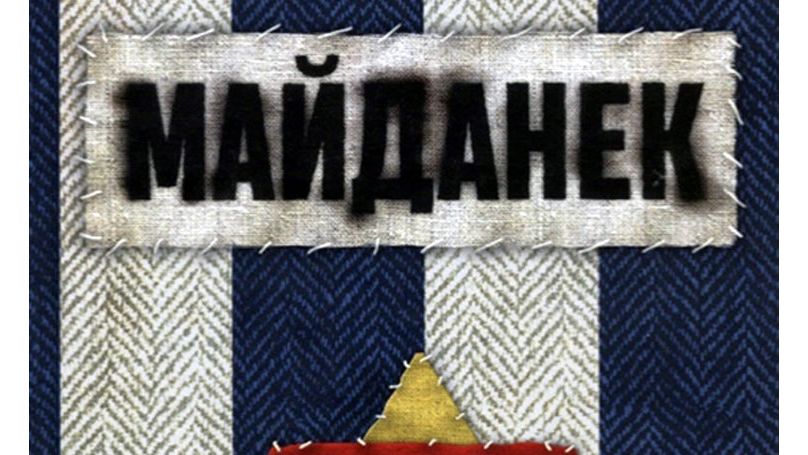
The name was heard by everyone; however, until recently, only few were aware of the content. Meanwhile, every Nazi camp had its own peculiarities, and in that sense Majdanek is literally an exemplary branch of the hell created by the Third Reich. Majdanek (Lublin) is one of the most terrible and profitable concentration camps of the SS, an integral component of Operation Reinhard in the General Government, a colony in occupied Poland. This place was so monstrous that new prisoners, after a few days in Majdanek, were looking for a transfer to Auschwitz (Auschwitz). It became a model of the Nazi camp system that smoothed both the exploitation of slave labor and the processes of humiliation and destruction.
The Jews who had not been killed in Sobibor, Treblinka and Belzec were brought here. This was the site where the mass destruction Erntefest ("Harvest Festival") occurred on 3 November 1943, when 18,400 prisoners were slaughtered to the music. This is where the bodies were burned at "open fire". This is where the guards beat the prisoners to death with their feet and played with their children as toys, which were later sent to death. Two of Majdanek’s commandments were eventually shot for the unprecedented scale of corruption by their own colleagues. There were about 500 escape attempts from Majdanek.
The camp was ready to host everyone: Soviet prisoners of war, “politically unreliable” Poles, Jews, men, women and children.
The book, prepared jointly by Russian Military Historical Society and Centre for Research and Education "Holocaust", is the first book in Russian to describe Majdanek both as a whole and in shocking details. Along with a comprehensive overview of the history and significance of the camp, the memories of the surviving prisoners were presented for the first time: the memory of the Slovak Jew Dionysus Lenard, who managed to escape, which became one of the most important sources in Holocaust historiography, and the memories of the Soviet physician Suren Barutchev (they were written thanks to the support of Konstantin Simonov, but were not published for a long time due to censorship obstacles). Both texts are shocking with unimaginable details. It is equally difficult to read the first-ever published key archival documents of the Polish-Soviet Extraordinary Commission for the Investigation of Crimes in Majdanek. It’s difficult, but necessary.
Quote:
"... The tractors that were the mouthpieces of death in the camp, worked loudly at dawn. They worked all the time, as I found out later, in order to drown out the heartbreaking screams of the victims and the sound of gunfire. And from eight o'clock in the morning until the late evening of 3 November, the camp was announced by loudspeakers of a special radio station, broadcasting loud music, foxtrots, marches, rumba and Charleston..."
- "Treblinka. Research. Memoirs. Documents", edited by Konstantin Pakhaluk
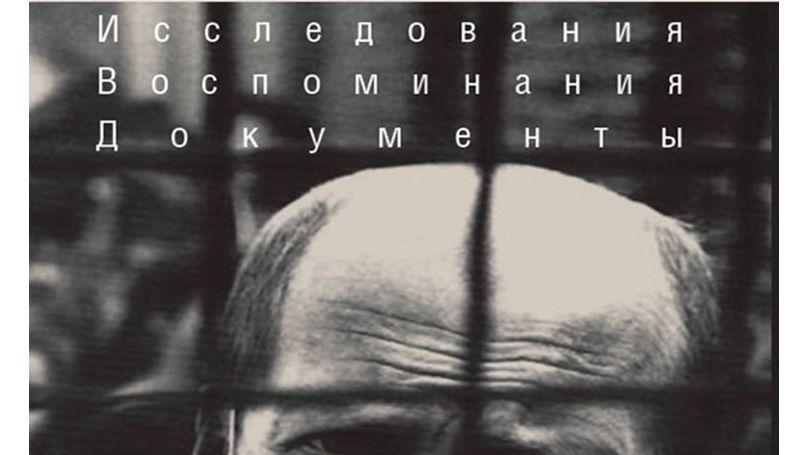
This book was also prepared jointly by Russian Military Historical Society and Centre for Research and Education "Holocaust".
In the Treblinka death camp, more than 800,000 Jews and several thousand Roma deported from the occupied territories of Poland, the Soviet Union, the Czech Republic, Greece and other European countries were killed for about a year after they had been brought there in the summer of 1942. In Treblinka 1, a labor camp, people worked as slaves for the benefit of the Reich economy. In Treblinka 2, whole echelons of people were killed in a slaughterhouse in order to serve the Reich idea to determine the whole nation.
And yet it was here that the legendary revolt of the prisoners, which became one of the symbols of resistance to the Nazi policy of genocide, broke out on 2 August 1943.
This book is almost impossible to read, often intolerable for the soul, and it should be read in parts and with breaks in order to avoid burnout and to master the monstrous material in full, which is absolutely worth it.
The book is the result of a well-coordinated collective work of an international team of specialists, each of whom has thoroughly explored some important aspect in order to create a unique mosaic. There’s an extensive essay on the history of Treblinka. There’s an important piece of material about collaborators doing the dirtiest job, which included humiliation, torture, and murder. There is a detailed set of evidence to dispose of “arguments” of Holocaust deniers shedding light on the scale of crimes in Treblinka.
There are first published in Russian memoirs, which are among the key sources on the subject of the Holocaust: the memoirs of two Jews, Yankel Wiernik and Samuel Willenberg, who managed to escape from the camp and revealed its essence to the world in all dreadful details. And there are Soviet investigative materials which had been never published before in full, prepared for the evidentiary basis of the Nuremberg trial - transcripts of interrogations and testimonies.
All of this together represents perhaps the most complete study on "the Hell of Treblinka" written in Russian language.
Quote:
"Two wachmanns worked near the engine. The first of them was Ivan, who was called "Ivan the Terrible" in the camp. It was a tall, 27-28 year-old, brunette man. There was a reason why he was nick-named as “Ivan the Terrible”. He was even crueler than Germans. I remember one time, when I was carrying bodies Ivan called one Jew from our group and cut his ear in front of everyone and handed a severed ear to this Jew. An hour later, this Jew was shot dead by him. I remember another case, when he killed one of our workers with a metal bar to the head. When I was transporting corpses from gas chambers to the pit, there was a horrific picture of maimed people. In addition to the gas poisoning in the cells, many had their ears, noses, other part cut off, women had their breasts cut off…".
- Ilya Ratkovsky, Konstantin Pakhaluk, Mikhail Razinkov. The tragedy of war.
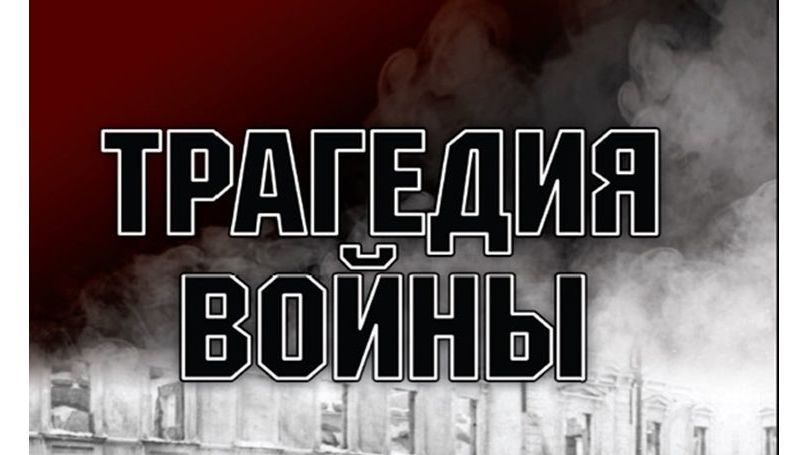
26 authors. 23 articles. 3 documentaries.
Specialists from Russia, Germany and Israel partnered to create a unique collection of materials devoted to the theme of war as a crime, as a large-scale policy of extermination and torturing of civilians; war as a source of evidence, myths and historical memory.
The wars of the XX century were characterized by particular cruelty, and they have risen the questions, which remain unanswered: why world wars were associated with mass war crimes and genocide; how to avoid “competition of victims” regarding the global policy of extermination; how to determine the guilt and responsibility of citizens for crimes committed by their compatriots or by the State on their behalf?
The authors address those "awkward issues" and "dark sides" which remain hidden quite often, such as war crimes and crimes against humanity, collaboration, genocide and mass displacement.
The book pays special attention to the Nazi policy of destruction using the most brutal forms in the occupied territory of the USSR - The Zhestianaya Gorka massacre , The Lokot Autonomy, the occupation of certain regions, including Rzhev and Krasnodar Krai , sophisticated methods of killing and raping locals. For the first time, a number of sources have been published about "the Forest Brothers" in Latvia, about volunteers for the extermination of Jews, about political machinations regarding the history of German crimes and Soviet collaborators. Among the unique documents the book includes the transcripts of interrogations about crimes of Ukrainian nationalists in Lviv and the village of Vinnitsk in Khmelnytskyi Oblast , the history of murder of the pupils of the Yeysk orphanage, the materials on the "Oberlander case" of 1960. The latter is a crucial chapter in history: on 5 April 1960, the Soviet Government organized an international press conference to expose Theodor Oberländer’s war crimes committed by him in 1941-1943. (Theodor Oberländer - The West German Minister of Displaced Persons, Refugees and War Victims).
Quote:
“Oberländer said that Soviet people have changed and they face death impassively, regardless of any suffering. Oberländer regarded Russians from a biological point of view. He claimed that when a person lives close to nature and leads a primitive kind of life – he can endure torments and face death more easily. That is why, as Oberländer concluded, one should show Russians no mercy. If we spare them, Oberländer said, they will twist our heads, and history always justifies the winners, whatever they do. In order to prove his point, Oberländer offered to go to the Pyatigorsk prison where arrested Soviet citizens were kept. The participants of the wild party drove to Pyatigorsk at night. There, Oberländer served us coffee and cognac, and then we went to one of the cells. There were men and women in this cell, as I recall. The first victim to be tested was a detained Soviet teacher. Oberländer demanded that the girl undress. She refused, and he ordered the officers to tear off all her clothes. It should be added that he had kept a whip with him. With this whip, he began to beat the girl, demanding that she acknowledge her involvement with the guerrillas. But the girl didn’t say a word. Without a result, Oberländer furiously grabbed a gun and shot the girl in the right chest. He did so not to kill her immediately, but to prolong her torment. But he heard nothing but cursing. Oberländer shot this girl several times again”.
- Lev Simkin. Sobibor. Afterword.
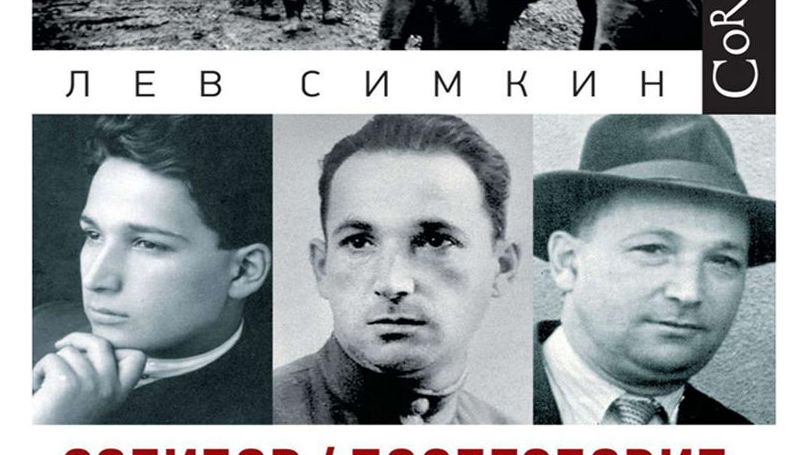
The material is based on Lev Simkin’s enhanced book ”One and a half Hour of Retribution”, which was published in 2013 and met with a broad response. It tells the story of Alexander Pechersky in detail, based on the documents and memories collected by the author. In the next few years, however, the Central Archive of the Ministry of Defense released a number of new materials, which provoked new myths and legends about Pechersky, many of them were false and many had to be corrected.
This book contains both details of the dramatic biography of Alexander Pechersky, new facts related to the revolt in Sobibor, details of his post-war life, and declassified accounts of "genocide soldiers" - former Soviet citizens, who served as guards in the death camp.
Quote:
"Anyone who reads it would wonder why did millions of people not resist and allow themselves to send themselves to gas chambers, why did those sentenced to death so rarely try to take one of the torturers with them? Hannah Arendt attributes it to the phenomenon of the destruction of individuality, which began with the appalling conditions of transportation to the camp, when frozen naked people were stuffed into the wagons for livestock, then upon arrival, they faced with "the shock of the first hours" and with "the manipulation of the human body with its infinite ability to suffer". Moreover, "heroism is not a natural attribute of human nature”, as Simone de Beauvoir noted. It is not the helplessness of victims in the face of executioners that we should be surprised with, but the fact that they overcame it"".
- Jan T. Gross and Irena Grudzinska-Gross. Golden Harvest. Events at the Periphery of the Holocaust.
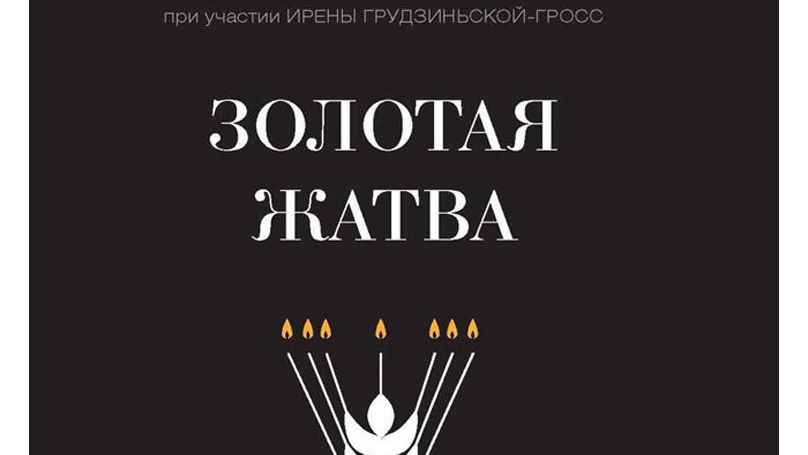
The starting point for this lucid and chilling book is a blurry photograph showing a group of peasants in a field behind a pile of human bones and skulls, displayed “as if they were pumpkins or watermelons.” The peasants are gleaners who have been digging through the ashes of Treblinka, looking for gold teeth and other treasures.
The local people turned into unstoppable hyenas: mass graves became a "gold mine" for them and the process of digging up and "revising" the decomposed bodies and bones was a "golden harvest".
The brutally tortured people didn’t find peace even after the death. This story regards all possible sins, in particular greed, looting or violence.
The “Golden Harvest" is about the backroom of the Holocaust, about a mob that chose not to support or save, but to kill and to take advantage of graves of the victims. The worst thing is that these uncountable crimes remain unpunished.
How did it happen? Why did it happen? What would you do if you were there yourself?
This book is a short essay on shame and disgrace, on the things that people tend not to remember, but to hide and deny. Well, they failed this time.
Quote:
"At some point after the occupation - there was a sudden shift in value regarding Jews. It was not a local process involving specific "affected" areas or villages, but an all-European phenomenon: indeed, killings and looting took place wherever Jewish refugees and victims of the Nazism appeared. It happened in the summer or autumn of 1942, when suddenly it became clear that everything was possible. Using a chemical metaphor, a kind of "sublimation of aggression" has occurred. Sublimation - is the transition of a substance directly from the solid to the gas state, without passing through the liquid state. This sublimation of aggression against Jews occurred throughout occupied Poland. The pre-war animosity towards Jews, which caused the society to push them into the margins of public life, or even out of it, suddenly turned into physical annihilation or acquiescence of this policy. Criminals felt no guilt while perpetuating their crimes. Where would that feeling come from if, in the eyes of so many, the Jews were no longer human, but game, hunted with excitement and ruthlessness? "Diary from the Years of Occupation of Zamoyshchina" about the liquidation of the ghetto in Szczebrzeszyn” left by Zdzislaw Klukowski reads: "Some took part in the harassment and stalking of Jews personally. They showed the places where Jews were hiding; young people chased even children who were later killed by [Polish] police in front of everyone". Stanislaw Geminski of Lukov wrote: "In Trebišov, some civilian guards, local peasants patrolling the area were ordered to capture all local Jews and send them to Lukov. The Jews were dragged out of their houses, grabbed in fields. The gunfire was still heard when our “hyenas” were already looking to steal from the leftovers of the Jews".
- Ārons Šneiers. Profession is death. Trawniki training camp. Crime and retribution
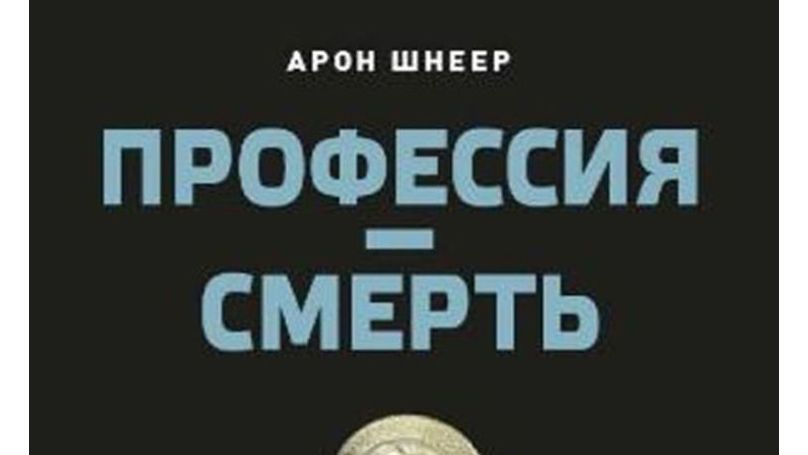
Ārons Šneiers is a Russian and Israeli historian, who had been an employee of the Yad Vashem Holocaust Remembrance Centre for many years, the author of the fundamental work "Capture. Soviet prisoners of war in Germany, 1941-1945" (2005) on the history and system of destruction of Soviet prisoners of war organized by the Third Reich.
“Profession is death” tells about “Trawniki men” - guards of death camps, who were trained in the special SS training camp of "Trawniki". They are accountable for millions of people tortured, shot, burned and killed in the gas chambers. Many of them hid in Germany, the United States, Canada, Austria, Italy and Estonia. But after World War II, Soviet and Israeli intelligence agencies followed their trails for retribution.
After the liberation of Majdanek’s prisoners, Soviet investigators obtained a file with materials on 5,000 wachmanns, photographs, profiles, prints, notes etc. Many of them were former Soviet prisoners of war trained in "Trawniki" and served in Majdanak, Sobibor, Treblinka, Auschwitz and other camps.
Their first trial of them took place in October 1944, and in 1986 the 79-year-old wachmann Fedorenko was sentenced to death, it was the last trial in the Nazi crimes case in the USSR, in total there were more than 160 trials. The book was based, inter alia, on case files and court proceedings. Among the sources are six national archives, the Yad Vashem archive was commonly used.
“Profession is death” consists of three parts and several annexes which tell about the prosecution of "Trawniki men" as well as about the operation of the training camp. "Trawniki" was literally an international camp, but the overwhelming majority of former Soviet citizens who were trained there were Ukrainians. After a three-month course, the graduates took a single exam - each of them had to kill a war prisoner from a neighboring camp. After that he was provided with grey uniform and a Mauser rifle and send to one of the death camps.
Two other important details must be noted: wachmanns were to be executed for disobeying orders, and there were many such examples; there were also 100-200 attempts to escape, as many of wachmanns felt guilt and remorse. The former wachmanns served with partisans, joined the Red Army, took part in the fighting, received rewards, but this did not save them from punishment.
Quote:
"Yet many of them managed to hide their past. After the inspections, some of them were drafted into the Red Army, served six to two years and returned with "clean" documentation to their families or, conversely, to very remote places where no one knew them. Most of them became ordinary workers and farmers, some of them worked as engineers and technicians, some of them even became the heads of various farms: Alexey Govorov, who said in court: "I personally shot only fifteen people", had been a chairman of a collective farm for four years, another one was a Deputy Director of a butter-making plant, another one was a Deputy Director of a sovkhoz. One Trawniki man, who was an art worker, was told about by his colleague Vasily Kartashev during the interrogation on 4 May 1949, in Ternopil, who served in Lublin, in the Sobibor death camp, in the Janowska camp. According to Kartashev, in 1947 in Lviv he met at a bazaar his colleague, a former wachmann who had served in the Trawniki camp and then at the SS police headquarters in Lublin.
"When I met him, I started a conversation, and at first he did not recognize me, and then when I recalled that we were together in Trawniki, he remembered me and told me that he lives in the city of Lviv, works in the opera theater as a violinist, that he married an artist, who works as an actress in the opera theater. In a conversation, he mentioned that he had managed to buy documents and was currently living under an assumed name. <... > He even had a child.
<... > This Trawniki man noted another Trwniki man - Babić, who also lives in the city of Lviv and works as a cobbler in one of the workshops". Another Trawniki man, A. Duhno, was a student of a mining institute before his arrest. Moreover, several of them were working for law enforcement agencies at the time of their arrest: I. Voloshin, was an investigator of the local procurator’s office, and several Trawniki men managed to become members of the Ministry of Internal Affairs: for instance, Ivan Kurininiy who was a lieutenant of the Ministry of Internal Affairs and a candidate for party members. However, many of the former Trawniki men who had joined the guerrillas were accepted as alternate members of the party. However, State security officials who searched for war criminals found them everywhere".
Mass destruction: memoirs
- Seweryna Szmaglewska. Innocents in Nuremberg
- Seweryna Szmaglewska. Smoke over Birkenau
Even if World War II had not broken out, Seweryna Szmaglewska would still have been one of the most outstanding women in Poland. She was educated at the Free Polish University, known not only for the highest level of education, but also for freedom-loving traditions, the desire for equal rights for women and the rejection of anti-Semitism. Maria Skłodowska-Curie and then Henryk Goldszmit, known around the world as Janusz Korczak, were among the graduates of the university. Seweryna Szmaglewska graduated as a teacher and psychologist. Then she decided to continue her studies at the Faculty of Polish Language and Literature at the Jagiellonian University in Kraków and at the University of Łódź, but the war began, and one of the most educated young poles returned to her hometown – to the city of Piotrków and became a nurse in the local hospital of the Holy Trinity. Together with her university friends she organized an underground library and taught Polish literature. On 18 July 1942, Szmaglewska was arrested by the Gestapo, and after several months in prison, she was sent to Auschwitz II-Birkenau. The Nazis needed manpower and sent the prisoners to Germany, this “evacuation” went in history as "death marches". On 18 January 1945, the future writer managed to escape and hide in a haystack. Being one of the few survivors in Birkenau, she testified at the Nuremberg Tribunal as a witness and became the living evidence of the prosecution. In 1945 she wrote "Smoke over Birkenau", and the book "Innocents in Nuremberg" was published in 1972. Seweryna Szmaglewska was vice-president of the executive council of the Union of Freedom Fighters for Democracy (a veteran organization founded in 1949) and member of the Council for the Preservation of Memory of Struggle and Martyrdom.
"Smoke over Birkenau" – is a detailed description of the life in the concentration camp, it tells about the clothes and bunk beds, as well as about the arrangement of the community of prisoners, their relationship with each other, with the capo and the guards, a detailed account of their work, food, sanitary conditions. Her story coincided fully with the footage taken after the liberation of Poland by Soviet cinematographers and left no stone unturned against the line of defense at the tribunal. "Innocents in Nuremberg" - the author’s memories of her participation in the International Military Tribunal. Her own words are the best explanation.
Quote:
"Göring, the Marshal of Ghosts, appeared at the platform for the witnesses, throughout the process, he constantly made remarks, struck poses, prevaricated to disprove the irrefutable truth.
- Nicht schuldig! – he said these words so easily. - I am not guilty.
And all other defendants in the dock repeated after him:
- Not guilty, not guilty!
So, there were only innocent people in the dock at Nuremberg, and one of them, feeling everyone’s interest, kept talking. ...
Maybe Göring feels like the time of the murders is back, but the American guards are looking at him indifferently, just as the president of the Tribunal and reporters, and I’m trying to look at him as if I was on the other bank. I don’t want Göring’s brazen claims to throw me back into the abyss pressing me against the walls of the crematorium, robbing my faith.
But my efforts are in vain. It was Adolf Hitler screaming through the Göring’s mouth, who had infected Germans with his hysteria. I could hear that crowd of loyal supporters chanting, people who would do everything what Hitler says.
I looked at the closed window: it was very stuffy in here, no air to breathe. Göring listed his own successes, and then his failures, revealed the causes of his political intrigues, ridiculed his companions and rivals who were close to Hitler, sitting right next to him in the dock... From the depths of my memory I could hear a hateful German scream, it’s coming, it enters the room, merges with Göring’s voice, who learned this manner of speech from his demoniac Führer, yes, it’s Gessler, camp commander, giving the Christmas speech, Hitler’s scum, a tiny one compared to the great scum in the dock.
He screams the same way, with the same intensity, with the same blindness".
- Primo Levi. If This Is a Man
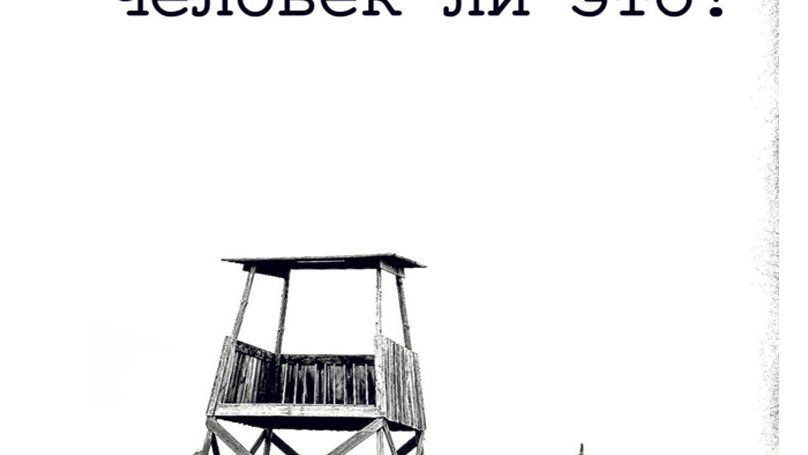
The book by Italian chemical engineer, a Jew, Primo Levi, is an autobiography. In the autumn of 1943, Levy joined the partisan detachment and showed himself to be brave and courageous. After the unit was defeated, the Italian fascists handed the captured guerrillas over to the Germans. During the interrogation, Levi made no secret that he was Jewish, and was sent to Auschwitz on 11 February 1944, where he became a prisoner no.174517. On 27 January 1945, Soviet soldiers freed the prisoners. And in 1947, the man of a completely technical mind, Primo Levi suddenly wrote a small book, " If This Is a Man?" (Se questo e un uomo?) about his survival in the death camp.
The book wasn’t successful at first, as people wanted to forget the horrors of war. It was not until 1958 that it was finally appreciated.
Together with Levi, 650 people arrived in Auschwitz, and only 23 of them survived. Levi was weak, had some health problems, and until his death he was quite surprised with the fact that he survived. He himself explained that he was in Auschwitz for nine months only.
But the reader of this book will definitely discover some unconscious practices of survival and self-preservation that the author used in the camp and described in his book. Among them is a manifestation of precisely what in those realities seemed to have been destroyed first - the fortress of human bonds and mutual support. He described his amazing friendship with another chemist Alberto Dalla Volta, with whom they shared everything equally. Levi noted that it was more about moral support as both of them had nothing. He recalled that the Italian laborer Lorenzo Perrone, who served in the camp, he daily brought them a bowl of soup, which the two of them ate. He and Volta were then forced to take a chemistry exam, and Levi was assigned to work as a janitor in the lab. Before the "death march" Levi was “lucky” to fall ill with scarlet fever, and Alberto came to say goodbye to him, being confident that his friend would die soon. In a hurry, SS men forgot to finish the sick and wounded, and Primo Levi survived. Alberto died during the march.
Whoever reads this book along with “memoirs” of Rudolf Heß, will never become a Nazi. The book is very tough, but at the same time is full of the most precise and deep, rational psychology.
Quote:
"… we must certainly wash our faces without soap in dirty water and dry ourselves on our jackets. We must polish our shoes, not because the regulation states it, but for dignity and propriety. We must walk erect, without dragging our feet, not in homage to Prussian discipline but to remain alive, not to begin to die".
- Edith Eva Eger. The choice
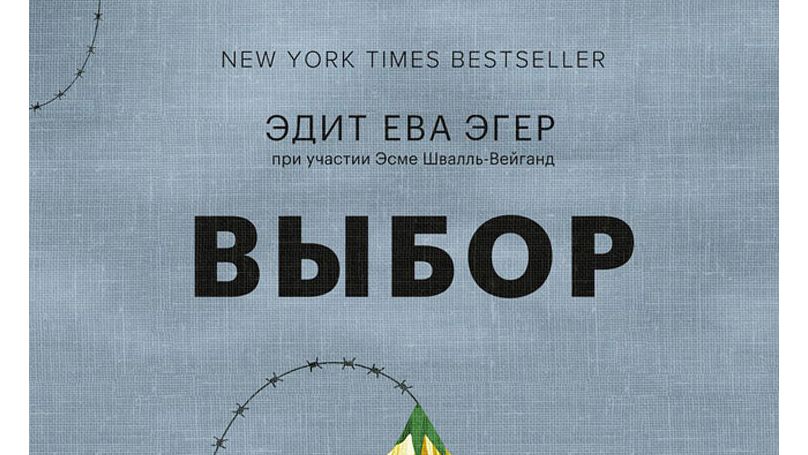
The book won the National Jewish Book-2017 and Christopher Award-2018 awards, and was strongly recommended by Bill Gates and Oprah Winfrey, and was included in the list of bestsellers of the Sunday Times, New York Times, Amazon, a Russian publishing house MYTH recognized it as the main book of 2019.
In 1944, a Hungarian Jew, 16-year-old ballerina Edith Eva Eger and her family were sent to Auschwitz. Her parents were killed on their first day in a gas chamber - and a few hours later, the infamous Doctor - Josef Mengele forced the girl to dance for him to earn her right to survive. Throughout her life, Edith blamed herself for her mother’s death - she did not know how and why people were distributed during selection, and when asked by Mengele, she named her mother as her mother rather than her sister.
With her sister she had to pass through the hell of Auschwitz, Mauthausen and Gunskirchen and survive the death march. On 4 May 1945, an American soldier pulled her, half-dead, from a mountain of corpses.
Later she moved to Czechoslovakia, got married, migrated to the United States, received doctoral degree in psychology, became known as an outstanding psychologist, worked with veterans and physical and mental traumas victims. Dr. Eger became the Teacher of the Year in 1972, Woman of the Year in 1987, the protagonist of the Dutch documentary on the Holocaust, won the California State Senate Peace Prize in 1992. Thirty-five years after the end of the war, she visited Auschwitz – on purpose, to defeat the survivor syndrome. And as a result of her life, her professional and spiritual work, she wrote this book, titled "the Choice".
It’s not just a life story. It’s also a story of preserving yourself - and formulating universal lessons that can help a lot of people. She was helped by mutual aid and empathy for others, self-denial and devotion to others – to save her sister, hoping to meet her loved one. She had a unique perception: when she danced in front of Mengele, she saw him not as a monster, but as a prisoner of his own soul, a worthless person who would have to live with knowledge of his monstrous deeds.
Eger is often compared to Anne Frank, who manages to survive. They had a similar education and were brought up in similar families, and they went to camp at the same age, and they both managed to keep the amazing ability to feel and to believe. Anna’s diary ended by the gates of the camp. Edith’s memories are the part of Anna's story that we will never know.
Edith spent a very long time healing her soul, rethinking her experience, going through denial, trying to lock up memories, enduring guilt, recreating what to believe in and where to find the meaning of life. And she found it.
Quote:
"If I could distill my entire life into one moment, into one still image, it is this: three women in dark wool coats wait, arms linked, in a barren yard. They are exhausted. They’ve got dust on their shoes. They stand in a long line. The three women are my mother, my sister Magda, and me. This is our last moment together. We don’t know that.
… All of the survivors I met had one thing in common with me and with one another: We had no control over the most consuming facts of our lives, but we had the power to determine how we experienced life after trauma. Survivors could continue to be victims long after the oppression had ended, or they could learn to thrive".
- Eva Schloss. After Auschwitz
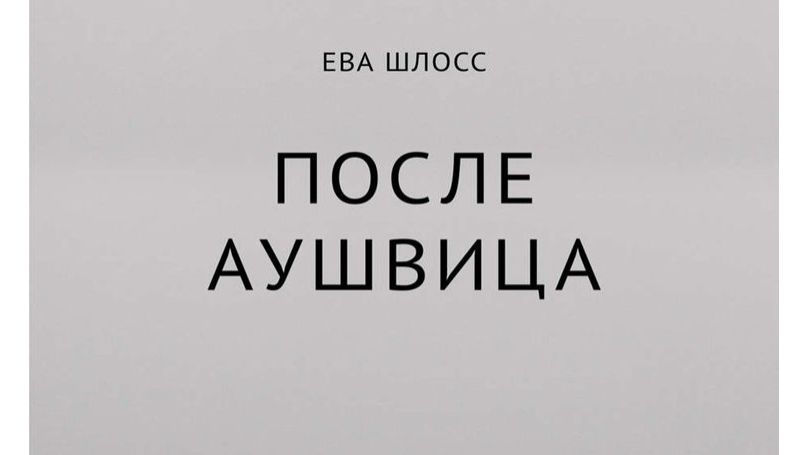
Eva Geiringer was born in 1929 in Vienna, in a wealthy family. After the Anschluss of Austria she experienced a change of attitude on the part even of good friends. In 1940 the family moved to the Netherlands and there in Amsterdam became friends with the family of Anne Frank. The Geiringers hid in a shelter for two years until they were discovered. It happened on her 15th bithday. The people who promised to help gave the Geiringers to the Nazis.
During the sorting in Auschwitz, Dr. Mengele sent Eva and her mother to the left, and they were lucky enough to survive. Her brother and dad were killed.
Eva never overcome the trauma left by Auschwitz. Eva studied, became a photographer, got married, had three children, successfully traded in antiques - and all this time she carried the terrible trauma with her. By the way, Otto Frank, Anna’s father, on his return, married Eva’s mother.
Eva couldn’t tell anyone what she saw and what she went through, even to her grandchildren who saw the camp’s mark - tattoo on her arm - she said it was a phone number.
In 1985, Eva performed at a theme show about Anne Frank. And following a sudden impulse, she revealed her own experiences. And then she told it in a different way - wrote two books and a play.
Quote:
"Austrians have always been considered charming and well-adjusted. As I learned later, they were also "charming Nazis" - smiling and cute.
In an insane attempt not to “waste” anything, the Nazis collected even the hair they shaved off the prisoners and turned it into carpets and socks. All hair longer than two centimeters were used to make wigs, and many proud Aryans of the Third Reich eventually walked with dead Jewish hair on their head.
…I would like to believe that such people, particularly Mip Brahms, face true justice after death, but my camp experience has deprived me of any belief in divine power and the afterlife. Justice must exist in this world - otherwise it doesn’t exist at all".
- Antonina Nikiforova. This must not happen again
This book was first published in the USSR in 1957. By the way, Marie Claude Vaillant-Couturier, who testified at the Nuremberg trial, wrote the foreword.
Antonina Alexandrovna Nikiforova was born in Leningrad, worked as a doctor, and on the second day of the war she volunteered for the front. She served as a military officer of the Twice Red Banner Baltic Fleet, was assigned to the Naval Hospital on the island of Saaremaa in the Baltic Sea, and was captured in October 1941 when the Germans took over the island.
She went through Majdanek and Ravensbrück. After her release, she wrote this book, which was subsequently reprinted several times, with later additions, and became one of the first documentary evidence in the USSR about the Nazi concentration camps.
This book is quite simple; however it makes a particularly strong impression. We can learn the story of Russian, Polish, Czech, French, Dutch, Jewish women. And in fact, "Dr. Antonina," as they called her, took it upon herself to give them a voice - in the time when they were sure to pass into oblivion.
Ravensbrück is the largest female concentration camp in north-eastern Germany, where women of different nationalities and statuses, from political prisoners to prostitutes and criminals, were gathered together. Nikiforova described their lives, their intuitive survival practices, their ways of dealing with the absurd daily evils - hunger, cold, backbreaking work, human experimentation, torture, poisoning etc. By the way, she stayed in the camp even after it had been freed: she worked in a medical unit to provide medical assistance to prisoners before sending them home.
They agreed that if they survived, they would tell the world about it. Antonina Nikiforova kept her word for everyone.
Quote:
"Everything is wet near the drain, sewage is everywhere, and some mattresses cover the drain. They are wet as well. The SS lady Erna came in with a belt in her hand, opened the door to the room with psychiatric patients and began whipping them...
I was in the Middle Ages... only chains on the wall were missing, to handcuff the sick. The air is terrible, especially since the girls are bringing the coffins with the corpses very close to the room where the sick were kept. My working place was being prepared for me... Women scared to death stare at me and at the coffins. Everyone knew - once she gets here, she’s terminally ill, and two or three days later she is going to lie in that corridor in a coffin or on the table for another autopsy".
- Pavel Polyan. Life and death in the hell of Auschwitz
"Sonderkommandos" (special units) was an invention of the Germans who didn’t want to get their hands dirty. They forced the Jews to perform all the most terrible procedures in the process of destroying their own brothers. They assisted during homicide in gas chambers, body recycling, cremation, gold teeth and hair collection. Of course, all the workers of Sonderkommandos were also to be killed one day. Nevertheless, 110 of 2,200 people managed to survive in Auschwitz-Birkenau. Some of them recorded what they had been through, some of them spoke in an interview, even death notes were found buried in the ground or ashes next to the crematoriums.
Paul Polyan dedicated his book to them.
Here are a number of essays of a general nature - on the estimation of the number of victims, on the liberation of the camp, on the unprecedented cynical psycho ethics, the phenomenon of Sonderkommandos, on the resistance and revolt of 7 October 1944. And there are also nine fascinating documents - texts written by five members of the Sonderkommandos (Zalman Gradovsky, Leiba Langfus, Zalman Leventhal, Heim Herman and Marcel Najjari), sort of handwritten chronicles discovered from 1945 to 1980.
Quote:
"The newcomer has been brought up to speed, and finally it became clear to him that his loved ones - his wife, father, mother, children - are dead. And if for some reason they have not been killed yet he might be the one to “service” their murder! He is shocked, stunned, shell-shocked... What’s next? How should he react to all this unspeakable terror? Any form of refusal or even outrage would surely be a suicide. By the way, these suicides, or even attempted suicides, have certainly occurred, but they have been very rare. Gabay told of Menachem Lichy, who on his first day jumped in the fire. Leib-Gerschl Panić did the same, but on the last day of the uprising. E. Eisenschmidt reported on three cases of this kind: two are Jewish doctors during the October 1944 uprising, and the third is a former Makov policeman who swallowed 20 Luminal tablets but was rescued anyway. A similar case at crematorium V with the captain of the Greek army is recalled in detail by M. Nijli, his savior. Kalmin Furman, a fellow of Gradovsky from Lunn, tried to hang himself after participating in the burning of the bodies of his loved ones, but he was rescued as well".
- Maria Rolnikaite. I must tell
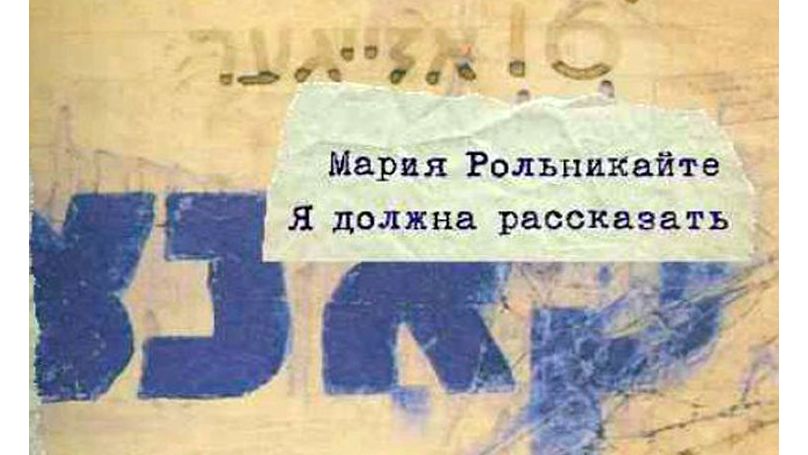
Thus is one of the scariest books ever. That’s the reason why we added it to the list of books for adults, not to the list of books that can tell children about Nazism, as it is something that even some adults can’t get through. It had many editions and was re-released several times.
The girl Masha from Vilnius kept a diary. In it, from day to day, she told about what was happening, about how the Germans entered the city, created the ghetto and drove the Jews there, killing her mother, little sister and brother. She wrote about her life in two concentration camps - Kaiserwald in Latvia and Stutthof near Danzig. The war consumed her life at the most fragile age - the age of growth, of hope, in the first attempts to understand this world – when she was aged between 14 and 18 years.
Masha saw everything. For example, she saw the prisoners who had to carry wooden decks and got frostbite, were sent to gas chambers. Other prisoners were forced to undress and wash the doomed ones. Masha herself had to do this - wash a prisoner, removing her wooden shoes along with her skin.
Masha lost her friend during the death campaign. Due to the escape of several prisoners, the order was to shoot "every third" in a line. Masha was lucky unlike her friend, who was nine.
Masha learned her diary by heart because she knew that even one word from the diary was a solid reason for Nazis to kill her. At the camp, she hid the notebooks in her shoes. She was helped to hide her notes by other prisoners who also put her writings into their shoes or in bottles and put them in the ground.
When the Soviet soldiers carried her half-dead in their arms, the only thought was that she would not be killed now.
Then Maria Rolnikate continued writing. She wrote the autobiography "It was then..." about her reunion with her father and sister, and about her post-war life. Maria died at the age of 88. She devoted her whole life to bringing her experiences to the world.
The book also contains for the first time a detailed chronicle of events of the Vilnius Ghetto, and this addition strengthens the actuality of her diary.
Quote:
"People say that Hitler, in his New Year’s speech on the radio, stated that on the eve of the next New Year, that is, in 1943, it will be possible to see Jews only in a museum, in the form of an effigy. If Hitler is not defeated at the front, his threats will come true...
... It’s scary to think that tomorrow I’ll have to die. ... cause I don’t want to! Because I’ve lived so little… And I haven’t said goodbye to anyone. Even to my Dad".
Mass murders: executioners
- Commandant of Auschwitz: The Autobiography of Rudolf Heß
This book is freely available on the Internet and is easier to read online than on paper.
Why would civilized modern people read the memoirs of the Commandant of Auschwitz? The organization and establishment of this death factory are explained in detail by documents and witness statements. Horrific statistics are also known, and can be found in encyclopedias and directories. But still, this book must be available for readers - it is a valuable testimony and evidence. We can hear the victims' voices in memories or testimonies. The executioners preferred to stay silent - their true motives, beliefs, feelings of responsibility or guilt remained unknown. In this sense, the autobiography written by Rudolf Heß in prison during the Nuremberg trial is a unique testimony to the phenomenon of the "banality of evil", the first document of this kind in post-war history. How could he do that? What did he feel? Was he human? All the answers can be found in this book, including between the lines.
The first chapters tell about his childhood, relationships with parents and classmates, religiosity, first love and the war. Then in detail about "service" and "professional activity", with figures which, however, need to be checked. Then, we can find a detailed and graphic account of the transformation of man into a talking machine of extermination, preserving only some of the dark instincts of a human being, the main of which is the instinct of blind obedience to those above the hierarchy, and complete indifference to those, who is at the bottom of it.
And then there’s the summation of life with the condemnation of Hitler and the leadership of the Third Reich, but not of himself as a "first disciple". This book is a meticulous chronicle of the degradation and self-destruction of the human soul. The Commandant of Auschwitz never understood what he was personally responsible for.
Quote:
"I had been brought up by my parents to be respectful and obedient toward all grown-up people, and especially the elderly, regardless of their social status. I was taught that my highest duty was to help those in need. It was constantly impressed upon me in forceful terms that I must promptly obey the wishes and commands of my parents, teachers, and priests, and indeed of all grown-up people, including servants, and that nothing must distract me from this duty. Whatever they said was always right...
There was no doubt in the mind of any of us that Hitler’s order had to be obeyed regardless, and that it was the duty of the SS to carry it out. Nevertheless we were all tormented by secret doubts. I myself dared not admit to such doubts. In order to make my subordinates carry on with their task, it was psychologically essential that I myself appear convinced of the necessity for this gruesomely harsh order. Everyone watched me. They observed the impression produced upon me by the kind of scenes that I have described above and my reactions. Every word I said on the subject was discussed. I had to exercise intense self-control in order to prevent my innermost doubts and feelings of oppression from becoming apparent. I had to appear cold and indifferent to events that must have wrung the heart of anyone possessed of human feelings. I might not even look away when afraid lest my natural emotions got the upper hand. I had to watch coldly, while the mothers with laughing or crying children went into the gas chambers....
In the summer of 1941, Himmler summoned me to Berlin to inform me of the fateful order that envisaged the mass extermination of Jews from almost every part of Europe, and which resulted in Auschwitz becoming the largest human slaughterhouse that history had ever known”.
- Georgy Shepelev. War and occupation 1941-1945. Unknown photos of Wehrmacht soldiers from the captured territory of the USSR and the Soviet-German front.
The book of Shepelev is not a strictly scientific work. It is not a journalistic work, and it’s not a narrative. It is a photo album with a special collection. Pictures have different quality, format and content. For fifteen years Shepelev bought pictures from heirs of German soldiers who fought in the territory of the USSR, as well as from random owners of old pictures. These are the photos the invaders wanted to show off at home.
In total, the collection of Georgy Shepelev has more than 5,000 pictures, however, the album included only those pictures, the location, the authors, the circumstances and the dates of which are known. We won’t describe the pictures – you’d better see them yourself. As once you see them – you will never forget.
The best annotation for the album will be the words of the curator of the publication, Deputy Director of the Department of Science and Education of Russian Military Historical Society Konstantin Pahalyuk:
"This is not just a photo album, it’s a scientific monograph in which a historical photograph was turned into a full-fledged historical source to clarify how German soldiers saw their "mission" in the occupied territory of the USSR. Each photo is a private, prejudiced look, with its cultural and ideological context. It is important to mention, that these are not officially propaganda photos, but private testimonies, their authors have made their own decisions about what to shoot, what to save for posterity and what to destroy. This is what makes it possible to take the visual sources seriously. Some occupiers viewed the ongoing war as a peculiar, extreme tourist expedition, and others as a "liberation" mission. Many everyday stories have been analyzed by Georgy Shepelev in their ideological context or as examples of domination and subjugation. We can see tortured prisoners of war or a half-naked German general who gives flowers to Ukrainian Dancers, an old Jewish man with a shovel etc...
The signatures to pictures left by German photographers are also highly important: the image of a typical village, a rural pastoralist, accompanied by the signature: "This is Russia! Dark and desolate", which refers to the idea of colonization of our country by a "civilized" nation, "the Wild East"; the signature in another photograph defines an orthodox church as "the Russian synagogue" which reflects the perception of the USSR as a "Jew-Bolshevik State"; commentary to another photo with the burning village reads: “It was so beautiful while burning”, which, as Georgy Shepelev wrote, echoes with memories of many German soldiers".
- Lev Simkin: He was Hanged in the Victory Square
Friedrich Jeckeln - the executioner of Babi Yar and the Riga Ghetto, one of the greatest villains of the 20th century, which remained unknown until recently. Obergruppenführer SS, General of the SS and police forces, Supreme Führer SS and the police in the south and then in the north of the USSR. It was this man who had been at the origin of the Jewish extermination since the summer of 1941 after the invasion of the Soviet Union by Nazi Germany. He created the idea of "rationalization" to optimize mass murders - to make people lie in a row with several people, shoot them in the back of the head, and then order the next group of people to lie on top of those shot...
Lev Simkin collected a lot of information in the archives - he added materials from American and German archives to the materials of the 1946 Riga Trial. It also contains the story of Metropolitan Sergius (Voskresensky), whose murder Jeckeln was accused of, the story of the girl rescued from the Riga Ghetto by him, as well as the story of the illegitimate daughter of the executioner.
He was captured at the end of the war and, after a week-long trial in Riga, was publicly hanged along with four other war criminals. His body, by a secret decree of the Presidium of the Supreme Soviet of the USSR, was left on the gallows for several days.
How did he become what he became? What was his career, up to the order to clear the territories occupied by the Wehrmacht from Jews, Gypsies, Soviet prisoners of war and partisans, to which the Germans attributed any inhabitants of the places where the underground existed? How did he become such a sophisticated murderer? Lev Simkin even cites his conversations with a psychologist, who specializes in evil.
Quote:
"Churchill, when asked why there is no anti-Semitism in England, replied, "Because the British don’t think Jews are smarter than themselves."
... sadism "is the transformation of infirmity into the illusion of omnipotence", giving a sense of absolute power over another being".
- Guenter Lewy. Perpetrators: The World of the Holocaust Killers
Guenter Lewy is an American historian and honorary professor at the University of Massachusetts. He was born in a family of German Jews, after his father was sent to Buchenwald, he fled to Palestine in 1939, then, after the war, to the United States. He spent his life researching the history of Nazism: the role of the Catholic Church in Nazi Germany, the persecution of Gypsies, the censorship in the Third Reich.
In this book, Lewy used transcripts, letters, diaries, and memories of German officers and soldiers, as well as testimonies of eyewitnesses to the genocide.
The main question asked by the author: how could they do that and why did they do that?
He wrote that until the 1960s, the Germans tried to forget and deny everything, claiming that they knew nothing. However, all post-war trials have proven that most of these people were quite sane - those ordinary people who swore an oath of “banality of evil”. They just followed orders without asking questions.
The vast number of examples cited in the book confirms the readiness of ordinary Germans to actively or passively support the policy of annihilating the "Untermensch", transferring the responsibility to the heads of the Third Reich.
A large chapter is devoted to how German justice helped criminals escape prosecution.
Quote:
"Germany tried to escape its own history. The Germans considered themselves to be a victimized people, helpless in the face of totalitarian terror and therefore incapable of resisting Nazi policies. Interestingly, this point of view was shared by the East German communist regime, which regarded German fascism as a special form of monopolistic capitalism that enslaved the German people. The victimization of Germany was widespread in the early post-war years. This was reflected in a dark joke popular at the time: "Germans will never forgive Jews for Auschwitz". In 2006, during the visit to Auschwitz, Pope Benedict XVI (Joseph Ratzinger) called himself the "son of a people who had been brought under the control of a gang of criminals", a people who had been "used as a weapon of destruction and domination". Thus, the dubious notion of collective guilt was superseded by the even more irrelevant idea of collective innocence. A society that had suffered psychological trauma responded to the charge of collective guilt by saying, "We didn’t know about it!". But almost no one realized that the claim of ignorance of the atrocities had seriously undermined the other justification - the inability to resist crimes. How can one resist something he doesn’t know about?
It was followed by further misunderstandings. In the first two decades after the defeat of Nazi Germany, the Holocaust was often presented as a consequence of an effective extermination machine, as a crime without criminals. The killing of Jews was seen as the consequence of work of faceless bureaucrats who were cogs in the nameless killing machine".
We also recommend the book - Holocaust: Bibliography of Russian-language literature for 1941-2020. / RAS, Fundamental library, Department of Scientific and Bibliographic Information; compiled by I.A. Altman, E.Y. Matveyeva, A.V. Gasilin; executive editor - A.V. Gasilin, editor - O.V. Sergeyeva. - Moscow, 2021.
























